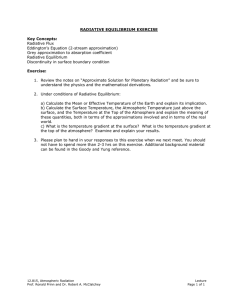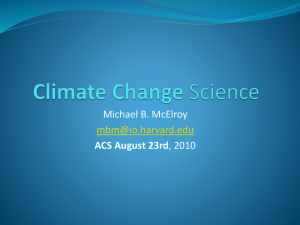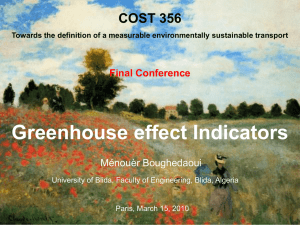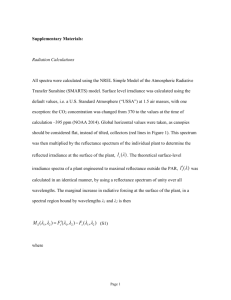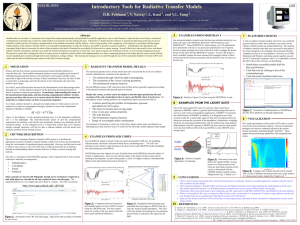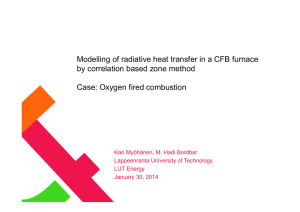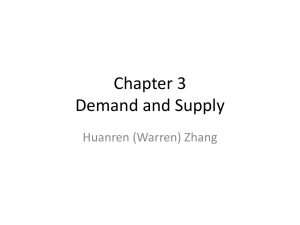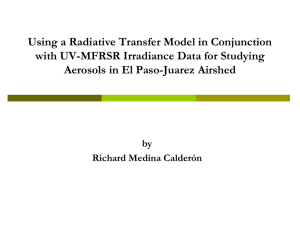Thoughts on Climate Theory
advertisement
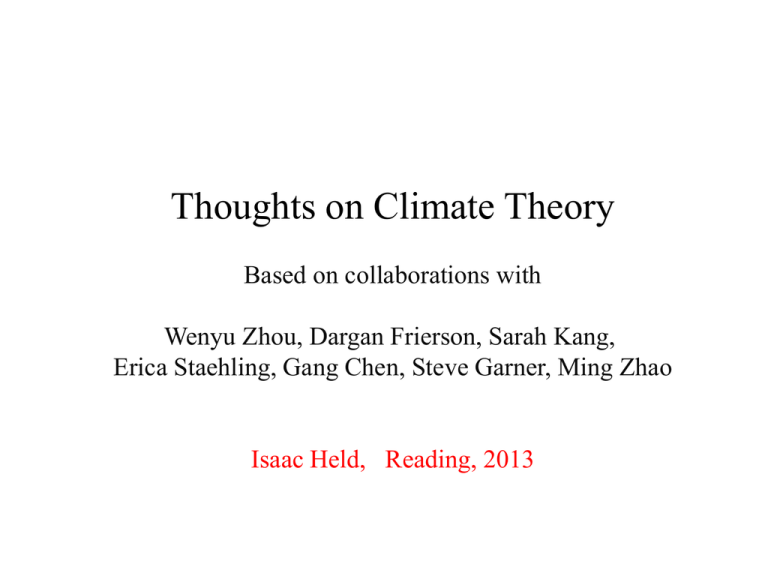
Thoughts on Climate Theory Based on collaborations with Wenyu Zhou, Dargan Frierson, Sarah Kang, Erica Staehling, Gang Chen, Steve Garner, Ming Zhao Isaac Held, Reading, 2013 Complex number analogy: Examples of moving off the real axis 1. 2. 3. 4. 5. Dependence of climate on convection schemes Non-rotating radiative-convective equilibrium Rotating radiative-convective equilibrium Hypohydorstatic rescaling Relative importance of upper and lower level baroclinicity in 3-layer QG model Idealized moist atmospheric model Zonally symmetric climate, No seasons, no diurnal cycle, no clouds 3 different idealized convection schemes Dargan Frierson Rather than (or in addition to) trying to find the best convection parameterization, define interesting classes of schemes and try to map out how climate statistics vary across this space of models Non-rotating radiative convective equilibrium Hard to use as benchmark because of “aggregation” Larger domain Muller, Zhao Remove cloud-radiative interactions and wind speed dependence in surface flux, and keep domain small, to minimize worry about aggregation Q(Z) Z Compare response of radiative-convective equiliibrium to upper tropospheric heating in cloud-resolving and hydrostatic models with convective parameterization(in progress, Muller and Zhou). Initial result is that the two models behave very differently Is this a useful test? Rotating radiative-convective equilibrium Wenyou Zhou – 25km hydro f=20 (near surface winds) 295K 307K Comprehensive model Aqua – slab ocean (Tim Merlis. 8 Andrew Ballinger) SST = 301K 5N 20N 1,000 km => 10,000 km Radius of Maximum winds Although resolution is marginal, model does produce systematic changes as parameters are varied As f increases, external scale of storm decreases but RMW decreases As SST increases, external scale increases but RMW decreases Can we decrease separation between balanced and convective dynamics? small earth : a ® a a W ® a -1W other time scales must be reduced but g is not parameter in hydrostatic core deep earth : g ® a -1g hypohydrostatic : Dw Dw ®a2 Dt Dt Study climate as a function of g – work in progress Model generated zonal wind responses El Nino Poleward shift unlikely to be primarily forced by tropical warming trend We have no quantitiatve theory for eddy momentum fluxes 3 layer QG 3 winds, two interfaces (temperatures) Simplest system allowing one to talk about upper vs lower level temperature gradients (ongoing work with Erica Staehling) Statistically steady 3 layer QG, forced by thermal relaxation to produce a localized baroclinically unstable jet; Linear friction in lower layer only Parameters in analogous two-layer model: • supercriticality • radiative relaxation • surface damping • width of radiative equilibrium jet • relative mass of two layers Additional parameters in three-layer model: • relative mass of 3rd layer • relative density jumps across the two interfaces • relative radiative relaxation times • relative width/strength of upper and lower radiative equilibrium baroclinic zones Can configure to try to make top layer look like stratosphere, but we focus here on very symmetric configuration: equal depth layers, identical density jumps, uniform radiative damping, identical strength and width of baroclinic zones in rad. eq. Modest displacement => jet and eddy energies shift latitude but remain vertically aligned Larger displacement => eventually splits into two jets, both winds and eddy energies vertically aligned Upper level radiative eq. shear Vertically averaged APE (upper layer radiative equilibrium jet) Upper level baroclinicity appears to exert surprisingly strong control on latitude of stormtrack/surface westerlies in this model Developing a closure theory for this system challenging because of non-local character of eddy momentum fluxes Developing a “perturbation theory” (as in fluctuation-dissipation theory) for the response to a small change in upper level baroclinicity, given the statistics of a control simulation, might be easier.
